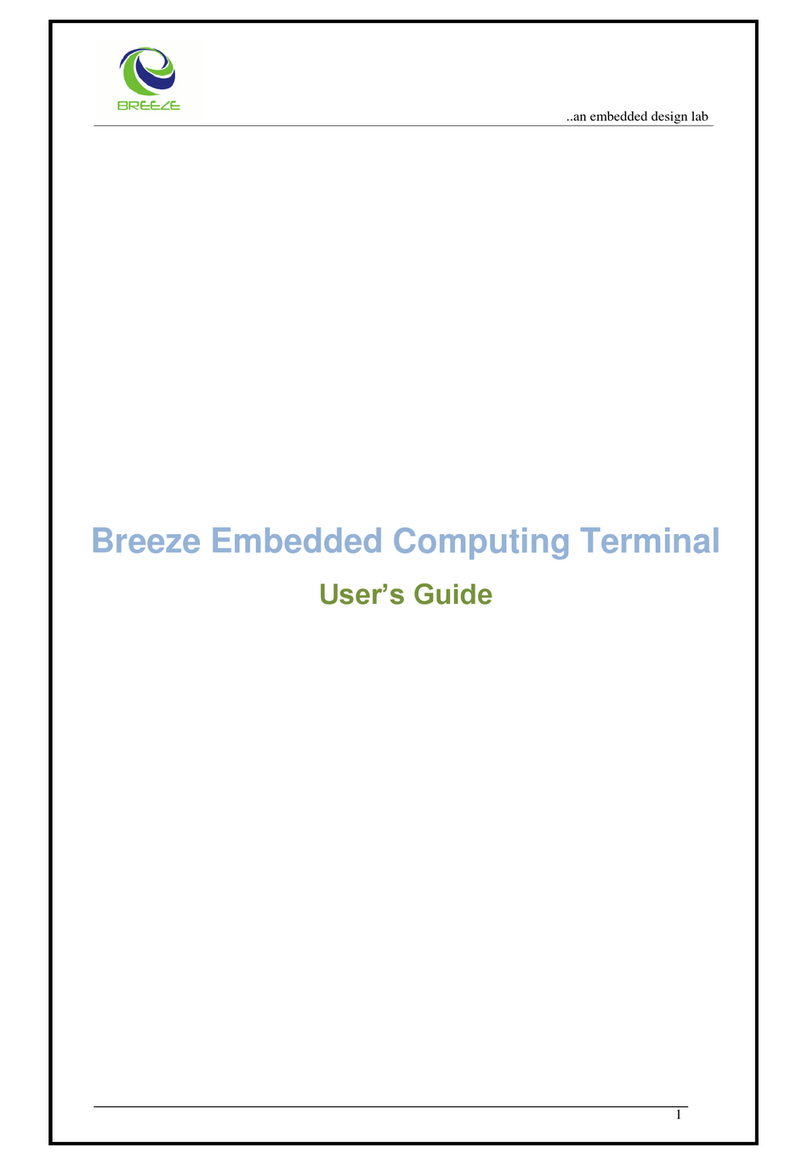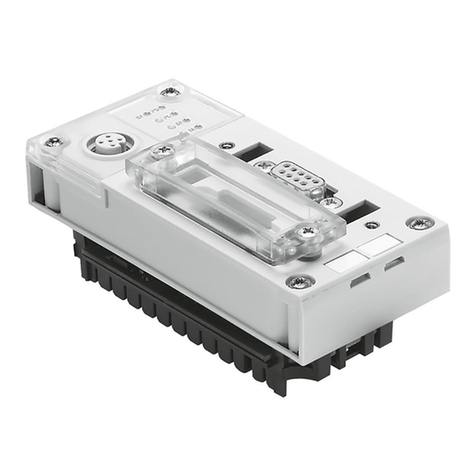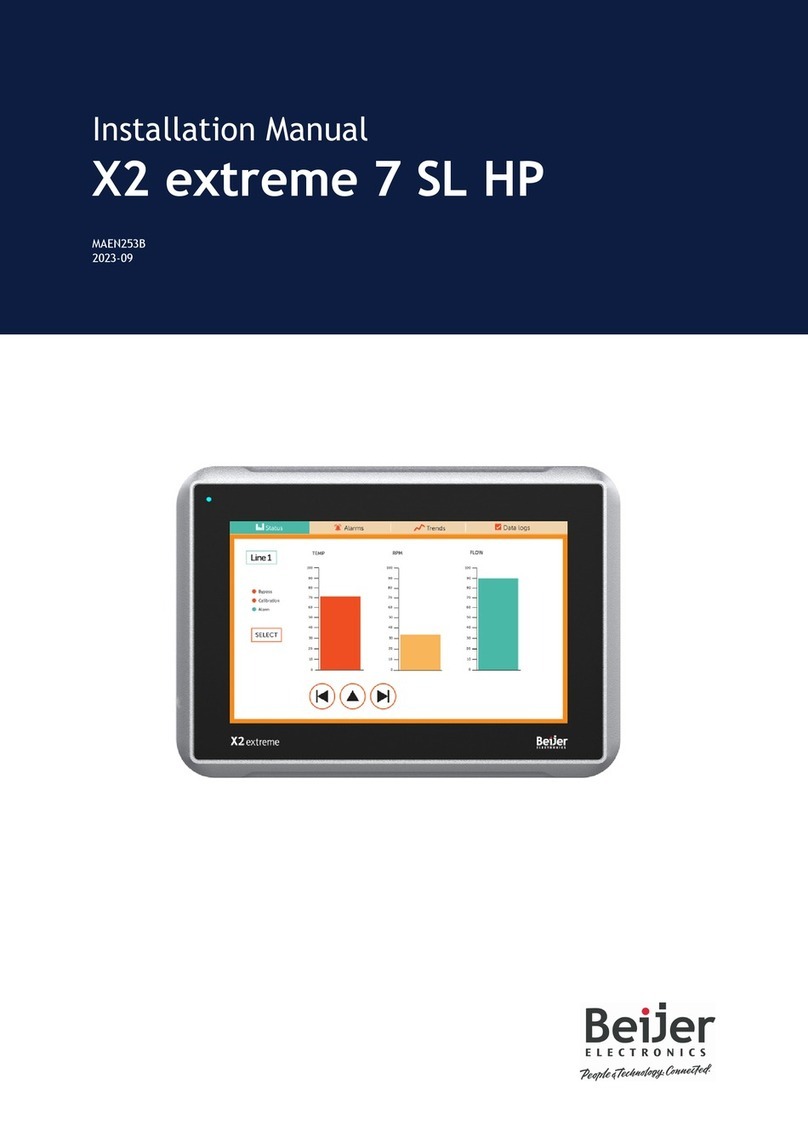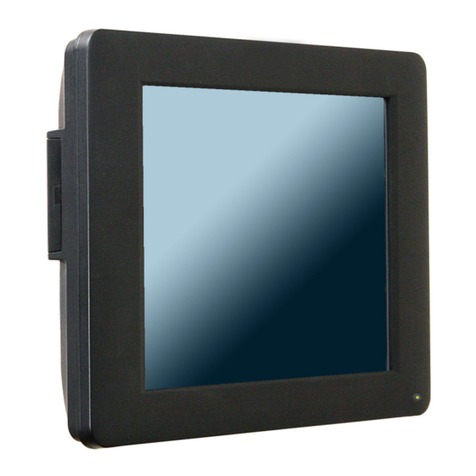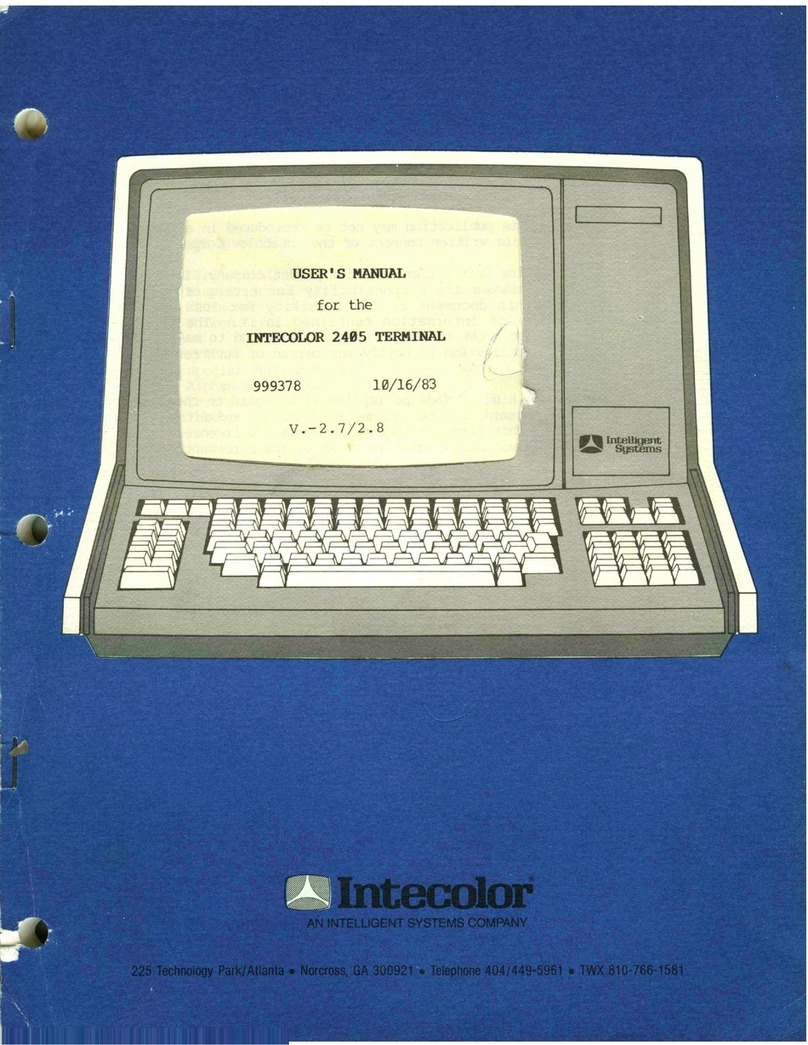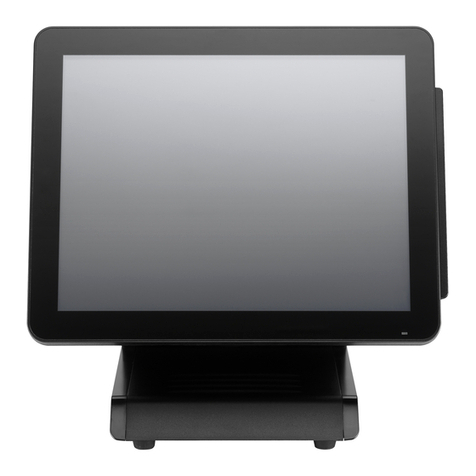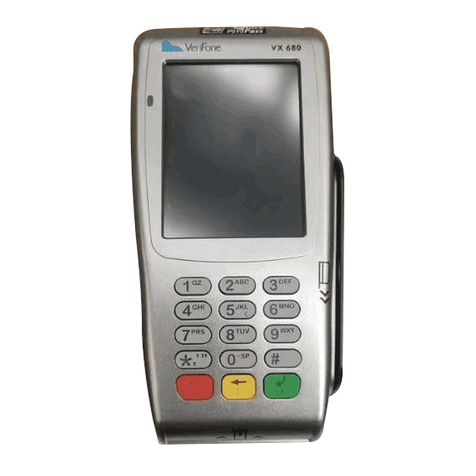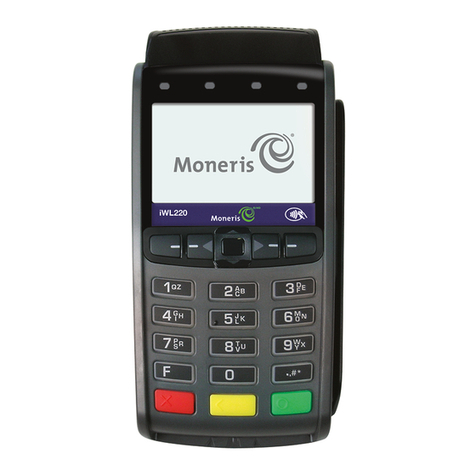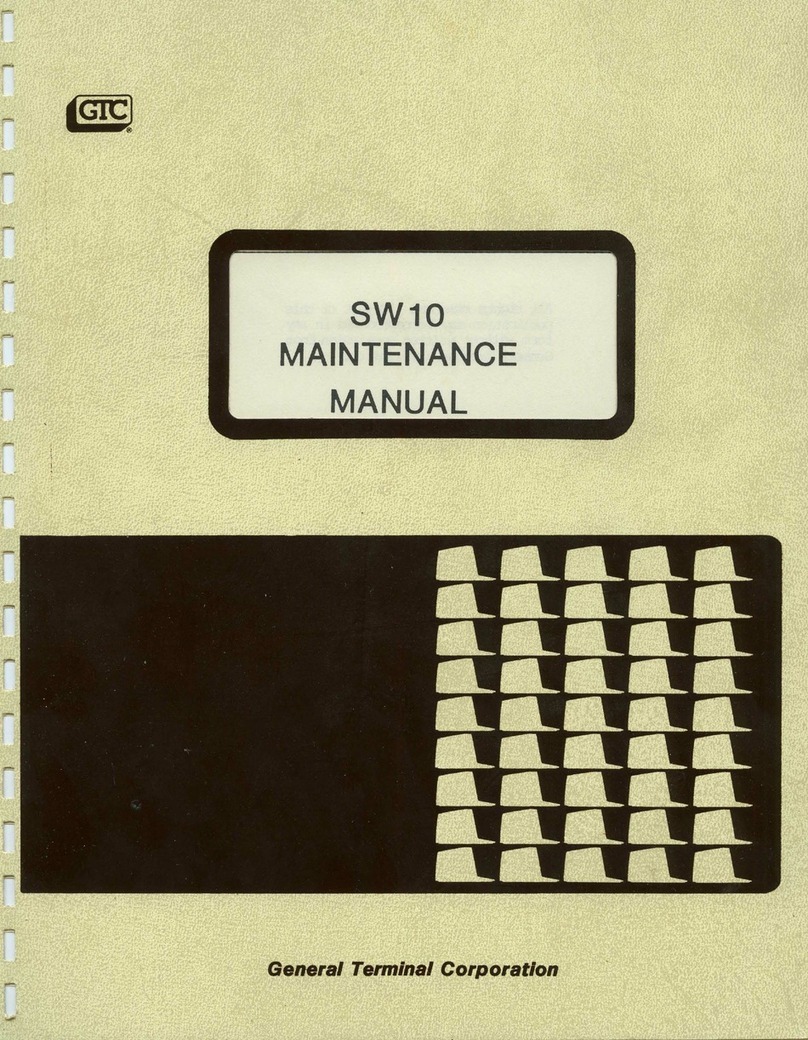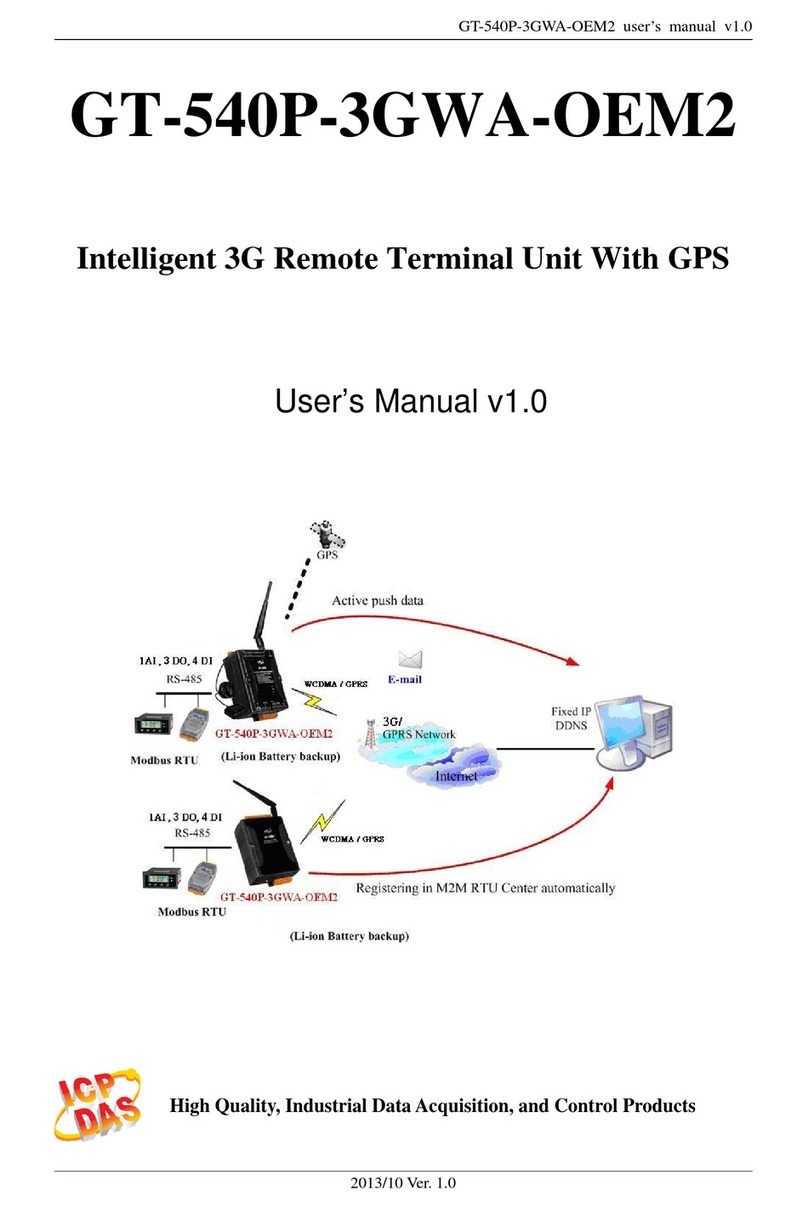Western Telematic PollCat III User manual

WTI Part Number: 12606
Rev. C
PollCat III
Pollable Call Accounting Terminal
Service Guide


Table of Contents
1. Introduction ...............................1-1
2. Unit Description ............................2-1
2.1. Front Panel Indicators ........................2-1
2.2. Back Panel...............................2-2
2.3. Important Board Locations .....................2-3
3. Common Problems and Questions ..................3-1
4. Installation and Configuration ....................4-1
4.1. Installation Hints ...........................4-1
4.1.1. PBX Interface........................4-1
4.1.2. Cable Kits ..........................4-3
4.2. Configuration Hints .........................4-4
4.2.1. Garbled Call Records ...................4-4
4.2.2. Problems with Alarms and Filters ............4-5
4.2.3. Incompatibility Between Modems ............4-6
5. DC Voltage Test Points.........................5-1
6. Power Supply ..............................6-1
6.1. Battery Replacement .........................6-1
6.2. Fuse Replacement ..........................6-2
6.3. 110V / 220V Operation .......................6-3
7. EPROM Upgrade ............................7-1
8. Memory Upgrade / Replacement ...................8-1
9. RS-232 Components ..........................9-1
9.1. Local Access Communication Problems..............9-1
9.1.1. Diagnosis of Local Access Problems ..........9-2
9.1.2. Replacement of IC at Board Location U26 .......9-3
9.2. Data Reception Problems ......................9-4
9.2.1. Diagnosis of Data Reception Problems .........9-4
9.2.2. Replacement of IC U27 or U28..............9-5
10. Modem .................................10-1
10.1. Internal Modem Removal .....................10-1
10.2. Internal Modem Installation ....................10-1
10.3. Installing an External Modem ...................10-2
10.3.1. Serial Card Interface Installation ............10-2
10.3.2. Configuring an External Modem ............10-3
10.4. Baud Rate Scanning ........................10-4
10.4.1. 2400 Baud Internal Modems...............10-4
10.5. Using Xmodem Protocol with PollCat III
High Speed Modems ........................10-5
i

Appendices
A. Description of System Interfaces .................Apx-1
A.1. PBX INPUT Ports A and B (DB-9 Male) ...........Apx-1
A.2. Computer Port (DB-25 Female; DCE) .............Apx-2
A.2.1. PollCat III Computer Port to 25-Pin PC .......Apx-2
A.2.2. PollCat III Computer Port to 9-Pin PC........Apx-2
A.3. SC1 Serial Card Interface (DB-9 Male; AT PC Style) ....Apx-3
A.4. Alarm Wiring ...........................Apx-3
B. LED Indicators ...........................Apx-4
C. Specifications ............................Apx-5
D. Approximate Maximum Storage Capacities ..........Apx-6
E. Spare Parts ..............................Apx-7
F. Customer Service ..........................Apx-8
Index ...................................Index-1
List of Figures
2.1. Front Panel Indicators ..........................2-1
2.2. Back Panel.................................2-2
2.3. Important Board Locations .......................2-3
7.1. EPROM Orientation (Board Detail) ..................7-1
8.1. SIMM Installation ............................8-1
9.1. Data Signal Levels ............................9-2
10.1. Modem Removal and Installation ...................10-1
A.1. PBX Ports A and B ..........................Apx-1
A.2. Computer Port to 25 Pin PC .....................Apx-2
A.3. Computer Port to 9 Pin PC......................Apx-2
A.4. Alarm Port Interface .........................Apx-3
ii
PollCat III Service Guide

1. Introduction
The PollCat III is a highly reliable solid-state PBX data recorder,
designed to collect call records from any system that sends ASCII
data via an RS-232 interface. Collected call records can either be
retrieved from a remote location via modem, or by a local PC
connected directly to the PollCat III unit.
This Service Guide provides additional information concerning
installation and configuration of the PollCat III unit, and describes
basic field service and upgrade procedures.
Disclaimer on Toll Fraud
We do not guarantee that if you use the PollCat III, you will not
become a victim of toll fraud. We provide this device to assist you
in minimizing your exposure to such losses. By monitoring call
records as they are received, you can potentially catch calls that
should not be made before they escalate and cost you large sums of
money. However, responding to alarms and determining what is
fraud and abuse is still up to you. Western Telematic, Incorporated
assumes no responsibility for any losses due to improper use of
this product.
1-1

Typographic Conventions
Throughout the manual, certain typefaces and characters have been
used to denote the following:
^(e.g. ^E) Indicates a key combination that is used to
invoke a command. For example, the text
"^B" (Control B) indicates that the [Ctrl]
key and the [B] key should be pressed
simultaneously.
COURIER FONT Indicates characters typed on the keyboard.
For example, ^B16 or ^B00.
[Bold Font] When text is set in bold face and enclosed in
square brackets, this indicates a specific key
on the keyboard.
For example, [Enter] or [Esc].
1-2
PollCat III Service Guide

2. Unit Description
2.1. Front Panel Indicators
ÀON: Lights when AC Power is applied to the unit.
ÁRDY: Indicates operational status as follows:
·Flashes slowly to indicate the unit is operational.
·Lights when PollCat III is in the Command Mode.
·Remains lit at all times when the unit has been configured
for the Direct Connect Mode.
ÂRXD: Flashes when commands are received via the
Computer Port.
ÃMEM: Indicates usage of PollCat III's internal memory.
·Flashes when memory is 80% full
·Remains lit when memory is 100% full
ÄBAT: Lights when battery needs to be replaced.
ÅALM: Lights when a Toll Fraud Alarm or No-Data Alarm
has been triggered.
ÆOH: (Off Hook) Lights when modem is off-hook.
ÇDCD: (Data Carrier Detect) Lights when modem has Data
Carrier Detect.
ÈPBX INPUT A: Flashes when data is received by PBX Port
A.
ÉPBX INPUT B: Flashes when data is received by
PBX Port B.
Please refer to Appendix B for more information on the front panel
indicators.
2-1
Figure 2.1: Front Panel Indicators

2.2. Back Panel
ÀAC Power Connector: Receptacle for AC Power Cord.
ÁModem Port: Includes two RJ-11 jacks as described below.
·LINE: For connection to a telecommunications line.
·PHONE: Not Used.
ÂPower Switch: Applies AC Power to the unit.
ÃAC Switch: Selects 115 VAC or 230 VAC power source.
ÄFuse: Houses 250V, .25 AMP slow blow fuse.
ÅAlarm Connector: For connection to an optional, external
alarm unit. For more information please refer to
Appendix A.4.
ÆSet-Up Switches: A bank of eight dip switches used to
configure communication settings, Local Access Mode,
Computer Port Password, and Power Up Defaults. For more
information, please refer to the PollCat III User's Guide.
ÇComputer Port: For direct cable connection between
PollCat III and a local PC.
ÈPBX InputsA&B:For connection to the PBX SMDR
Port(s).
2-2
PollCat III Service Guide
Figure 2.2: Back Panel

2.3. Important Board Locations
Item
Board
Location
WTI
Part No. Description
1 P3 CC-051 DC Test Points
2 B1 BC-084 Battery
3 U6 XB-087 EPROM
4 U2 XA-060 PBX LED Driver
5 1MB - 8MB PC3M-256 256K Memory SIMM
PC3M-512 512K Memory SIMM
PC3M-1Meg 1 Meg Memory SIMM
6 U20 XB-078 UART, Computer Port
7 U22 XB-078 UART, PBX Ports A and B
8 U26 XB-099 RS-232 Interface,
Computer Port
9 U27 XB-099 RS-232 Interface, PBX Port A
10 U28 XB-099 RS-232 Interface, PBX Port B
For additional Spare Parts information, please refer to Appendix E.
2-3
Unit Description
Figure 2.3: Important Board Locations

2-4
PollCat III Service Guide

3. Common Problems and
Questions
Symptom / Problem Solution
The "ON" LED does not light. Make certain PollCat III is
powered ON and power cable is
connected. If necessary, replace
fuse as described in Section 6.2.
The "PBX" LED does not light
when call records are received
from the PBX.
Cable connection is not correct.
Make certain cable is properly
attached, then check cable
interface as described in
Sections 4.1 and 9.2.
PollCat III is not receiving call
records from the PBX.
Check PBX cable interface as
described in Sections 4.1 and
9.2. Check Communication
Parameters as described in
Section 4.2.1.
Call Records appear garbled or
unreadable.
Check Communication
Parameters as described in
Section 4.2.1.
PollCat III is unable to make
connections at baud rates above
2400 bps.
Disable error correction and/or
data compression at PollCat III's
internal modem as described in
Section 4.2.3.
While polling using Xmodem
protocol, system generates
excessive "SHORT BLOCK" and
"BAD CHECKSUM" errors.
Communication software aborts
polling session.
Disable error correction and/or
data compression at remote
modem as described in
Section 10.5.
(Continued)
3-1

Symptom / Problem Solution
Your application requires an
external modem.
Install an external modem as
described in Section 10.3. Make
certain to fix the modem serial
port baud rate and enable
CTS/RTS handshaking as
described in Section 10.3.2.
You are able to dial in to
PollCat III's external modem, but
cannot communicate with the
PollCat III. This problem
usually occurs after a high speed
modem has been used to contact
the PollCat III.
Issue the appropriate AT
commands to fix the external
modem's serial port baud rate
and enable CTS/RTS
handshaking as described in
Section 10.3.2.
PollCat III's System Status
Screen shows the Modem Port
baud rate as 57.6 K bps, but the
modem does not actually
communicate at this rate.
Communication at 57.6 K is not
supported. Invoke command
^B90 to re-define the Modem
Port baud rate and refer to
Section 10.4.1 for more
information.
Local polling device cannot
communicate with the PollCat III
via direct cable connection.
Check Modem Cable to DTE
device. Check and/or replace the
RS-232 interface components as
described in Section 9.1.
User-defined Alarm Clues or
Data Filter are not detecting
desired calls.
Carefully check the definition of
the format, filter, and/or clue as
described in Section 4.2.2.
Memory Failure. Replace or upgrade memory
SIMM as described in Section 8.
The "BAT" LED lights to
indicate low battery.
Replace Battery as described in
Section 6.1.
3-2
PollCat III Service Guide

4. Installation and Configuration
This section describes issues that should be considered when the
PollCat III has been installed and configured as described in the
User's Guide, but will still not function properly.
4.1. Installation Hints
4.1.1. PBX Interface
In order to correctly install the PollCat III, it is important to
understand the PBX interface. If the PollCat III has not been
properly adapted to the PBX interface, call records will not be
received, or may appear garbled or incomplete.
If call records appear garbled or incomplete, make certain that
communication parameters for the PollCat III PBX Port(s) match
those for the PBX (Section 4.2.1).
If the PBX LED on the PollCat III front panel does not blink when
call records are sent from the PBX system, this is an indication
that the PollCat III is not receiving call records. First, make
certain that all cables are firmly connected, then check to
determine that cables are appropriate for the PBX interface.
Check the following:
·Connector: DB-25 or DB-9?
·Gender: Male or Female?
·Transmit Pin: Which pin is used to transmit data?
·Handshake Requirements: Does the PBX require a high
handshake signal in order to release data?
·Pin Assignment: Which pin must be held high in order to
release data ... Pin 5 or Pin 20?
These facts can be determined by referring to your PBX User's
Guide, or by testing the interface with a Breakout Box or
Voltmeter as described in this section. In many cases, the PBX
will use a standard DTE interface, transmit data on pin 2, and will
require a high handshake level on pin 5 or 20 in order to
release data.
4-1

4.1.1.1. Checking the PBX Interface with a
Breakout Box
A standard Breakout Box can determine which PBX interface pin
(usually pin 2 or pin 3) is used for data transmission.
1. If your Breakout Box that has two sets of LED's for each pin,
determine which LED indicates a negative voltage level.
2. Connect the Breakout Box to the PBX SMDR port and
monitor pins 2 and 3. One of these pins will indicate a
negative voltage level. The pin indicating the negative
voltage level is the transmit line.
3. If the PBX system does not require a handshake signal to
release data, you may see breakout box LEDs flicker
between positive and negative as call records are received.
4.1.1.2. Checking the PBX Interface with a
Voltmeter
A Voltmeter can also determine whether pin 2 or 3 is used for data
transmission.
1. Digital Voltmeter: Use pin 7 of the PBX SMDR Port (DB-
25 interface) as a ground and measure for voltage with the
red probe. The transmit line will register a -11.5 to -12 VDC
voltage level.
2. Analog Voltmeter: Reverse polarity by running the red
probe to pin 7, and then use the ground probe to measure
voltage. The transmit line will register a -11.5 to -12 VDC
voltage level.
4.1.1.3. PBX User's Guide
The best source of information regarding the PBX SMDR interface
is your PBX User's Guide. When reviewing the PBX User's Guide,
note that many manufacturers identify RS-232 pin assignments
based on the nature of the device that will be connected to the
system.
For example, a Transmit (TX) signal from the PBX may be
identified as a Receive (RX) pin in the PBX User's Guide, based
on the fact that the device connected to the PBX will receive this
signal. When referring to the PBX User's Guide, make certain to
determine the true direction of each signal.
4-2
PollCat III Service Guide

4.1.1.4. PBX Indicators
The PBX indicators on the PollCat III Front Panel can be used to
determine if the cable connection to the PBX is correct.
1. After connecting the PBX to the PollCat III, turn on the
power to the PollCat III unit. If the cable configuration is
correct and the PBX system is active, the PBX will begin to
release call records.
2. The PollCat III's PBX indicator will blink each time a call
record comes through. This indicates the cable connection is
correct, regardless of whether or not the baud rate setting is
correct.
3. If the PBX LED remains lit constantly and does not blink,
this indicates that the cable configuration is not correct.
Note:
Some PBX systems will force the transmit line to go to
a positive voltage level, and will not transmit data
when the handshake level to the system is low or not
present.
4.1.2. Cable Kits
The following PollCat III cable kits are available from WTI:
·PCK-3PC: For connecting the PollCat III to your PC.
·PCK-3PBX: For connecting the PollCat III to the PBX
SMDR port.
·MC-925-6: PollCat III Serial Card Interface to Modem.
These cable kits are designed to accommodate most common
interface requirements.
4-3
Installation and Configuration

4.2. Configuration Hints
After you have determined that the PollCat III is properly
connected to the PBX, check the following items related to system
configuration and filter definition.
4.2.1. Garbled Call Records
If the PollCat III displays call records that appear garbled,
irregular or incomplete, this is an indication that communication
parameters for the PollCat III PBX Port(s) do not match the
attached PBX system.
1. Access the PollCat III Command Mode and type ^B16
[Enter] to display the System Status Screen.
2. Check the Baud, Parity, and Bit settings for both PBX Ports.
Verify that parameters for both PBX Ports match the attached
PBX system.
3. Use Commands ^B92 (PBX Port A) and ^B93 (PBX Port B)
to set the communication parameters for PollCat III's PBX
Port(s) to match the attached PBX system. The procedure
for defining communication parameters is described in the
PollCat III User's Guide.
4. If communication parameters for the PBX are not known,
they can be determined by the process of elimination.
a) Access the PollCat III Command Mode and invoke the
^B94 command to activate the Monitor Mode. To
monitor the PBX connected to PBX Port A, type ^B94,A
[Enter]. To monitor the PBX connected PBX Port B,
type ^B94,B [Enter].
b) If records appear garbled, type ^B30 [Enter] to exit the
Monitor Mode. Invoke command ^B92 (PBX Port A) or
command ^B93 (PBX Port B) to select new
communication parameters, and then repeat steps "a" and
"b" until the correct baud rate is established.
c) If call records appear normal, PBX communication
parameters match the PollCat III. Type ^B30 [Enter] to
exit the Command Mode.
4-4
PollCat III Service Guide

4.2.2. Problems with Alarms and Filters
This section describes solutions for several problems often
encountered when defining Alarm Clues and Data Filters. For
more information on defining Alarm Clues and Data Filters, please
refer to the PollCat III User's Guide.
4.2.2.1. Testing Clues and Filters
When defining Alarm Clues, it is recommended to test each clue
before defining the next clue. To test clues, proceed as follows:
1. Define an Alarm Clue.
2. From a phone that is attached to the PBX system, place
several calls that match the Alarm Clue criteria.
3. Access the PollCat III Command Mode and invoke the ^B01
command using the following format:
^B01,clue,source [Enter]
Where:
clue Is the name of the clue being tested.
source Indicates the PBX Port that received the call
record. To review call records received via
PBX Port A, enter PA. To review call records
received via PBX Port B, enter PB.
4.2.2.2. The Asterisk Character (*)
When Alarm Clues are defined, the asterisk character is normally
used as a logical AND operator. Therefore, Alarm Clues cannot be
directly defined to search call records for the asterisk character.
If your application requires detection of asterisks in call records,
this can be accomplished by defining the Alarm Clue to search for
a range of characters that includes the asterisk. For example, to
create an Alarm Clue named STAR that will generate an alarm
whenever an asterisk is detected in call record field "A", define the
clue as follows:
^B81,STAR\1\A>'*A<, [Enter]
In this example, the asterisk character continues to function as a
logical AND operator, and the clue will search for characters with
a value that is greater than apostrophe ('), and less than comma (,).
The asterisk falls between these two characters.
4-5
Installation and Configuration

4.2.3. Incompatibility Between Modems
If the PollCat III is unable to make modem connections during a
Callback Routine at baud rates above 2400, this may be due to
modem incompatibilities related to error correction and data
compression.
This problem can usually be solved by disabling the error
correction and data compression features on PollCat III's internal
modem. Access the PollCat III Command Mode and use command
^B77 to re-define the Modem Reset Message as follows:
^B77,ATE0M0Q1&C1&D2&M0&K0S0=1 [Enter]
Note:
The "0" character in the above command line is a Zero.
For information on other modem related issues, please refer to
Section 10.
4-6
PollCat III Service Guide

5. DC Voltage Test Points
Caution:
This procedure must be performed while the
PollCat III is powered ON, and therefore, should
only be performed by a qualified technician. Take
proper precautions to avoid injury by electric shock
when accessing board components.
1. Remove screws that secure the Top Cover to the Chassis and
then remove the top cover.
2. Referring to Figure 2.3, find location U26 on the PollCat III
board. This component is the RS-232 interface for the
Computer Port. This IC provides easy access to check DC
voltages.
a) Pin 16 = +5 VDC
b) Pin 1 = +12 VDC
c) Pin 8 = -12 VDC
d) Pin 9 = Ground
3. Carefully remove the power supply cover. Referring to
Figure 2.3, find Test Point P3 on the PollCat III board. Test
Point P3 is labeled "TEST", and is located underneath the
Power Supply shielding. Use an oscilloscope or voltmeter to
check the following pins:
a) P3-1 = -17 VDC Unregulated (-12 VDC)
b) P3-2 = +17 VDC Unregulated (+12 VDC)
c) P3-3 = +5 VDC Regulated
d) P3-4 = Ground
e) P3-5 = +10 VDC Unregulated (+5 VDC)
Note:
Location U26 is the preferred location for testing DC
voltage. Test Point P3 is used primarily for checking
the voltage regulator.
5-1

5-2
PollCat III Service Guide
Table of contents
Popular Touch Terminal manuals by other brands

Mitsubishi Electric
Mitsubishi Electric Lossnay PZ-4GS-E Installation and instruction manual

InHand
InHand InDTU300 Series quick guide
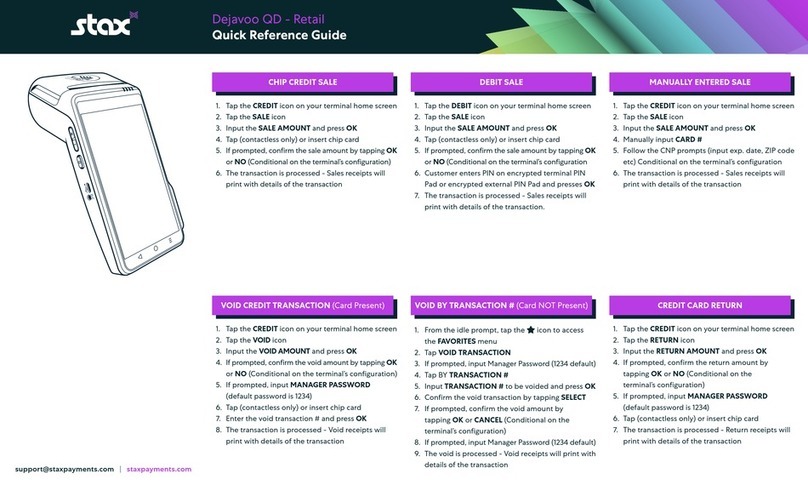
STAX
STAX Dejavoo QD Quick reference guide
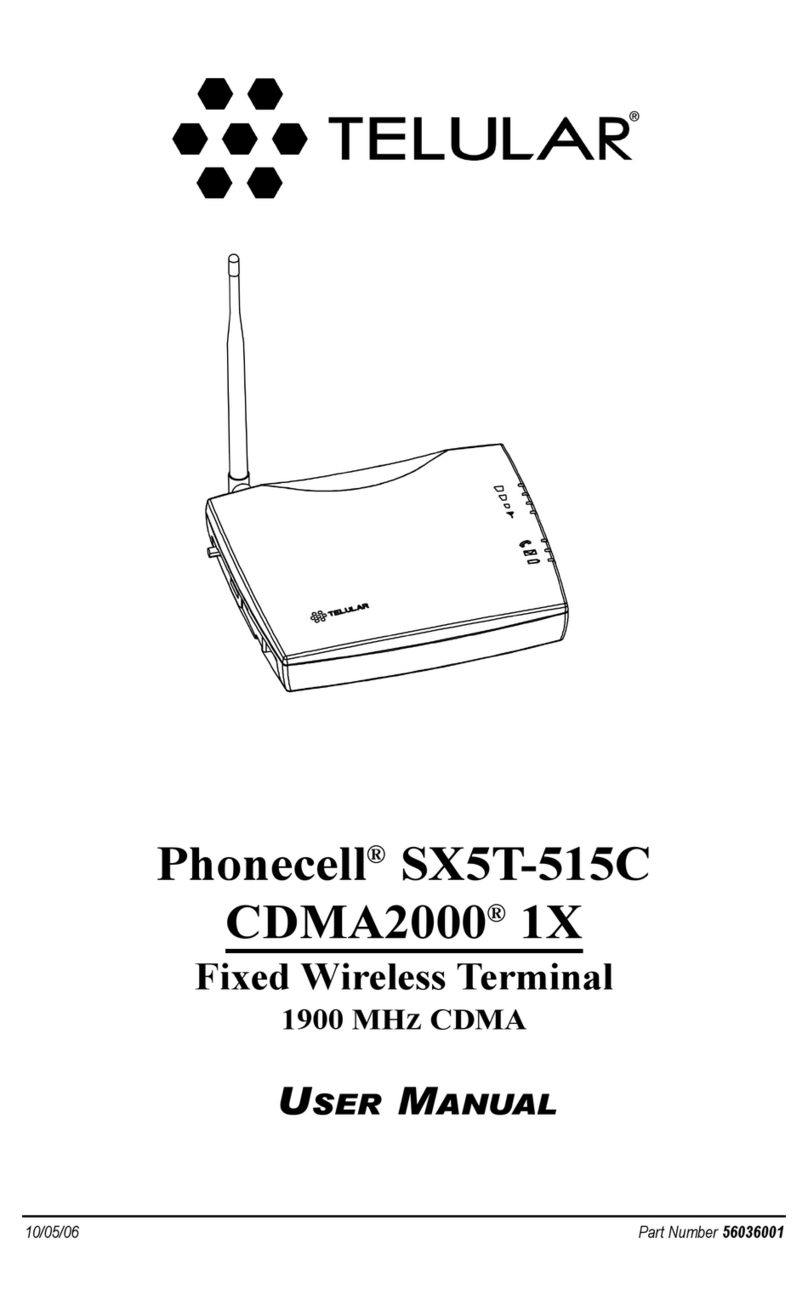
Telular
Telular Phonecell SX5T-515C CDMA2000 1X user manual
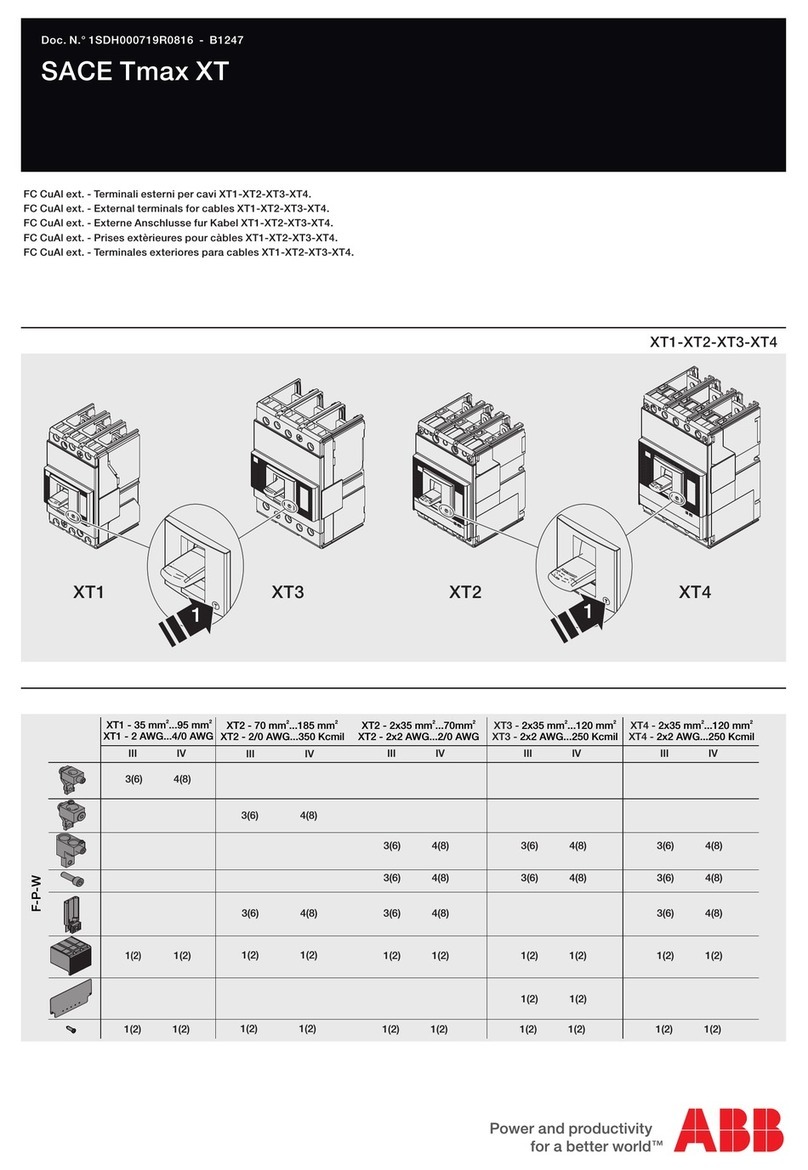
ABB
ABB SACE Tmax XT instruction manual
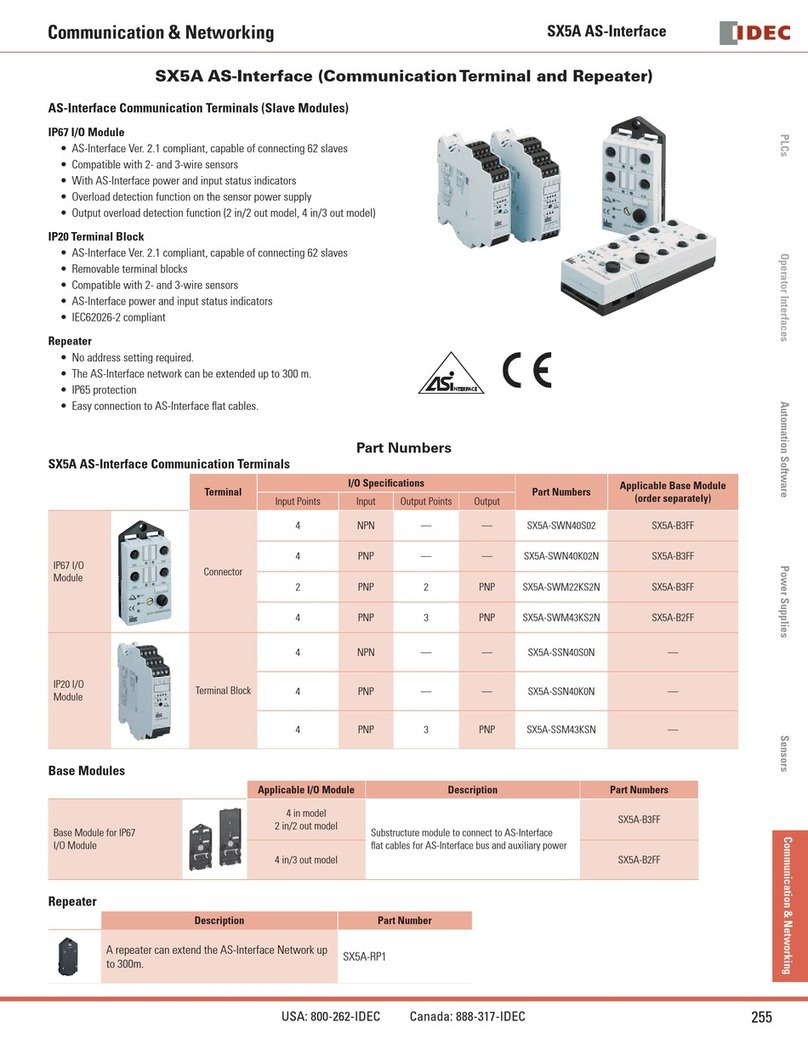
IDEC
IDEC SX5A Series Communication Interface Manual

